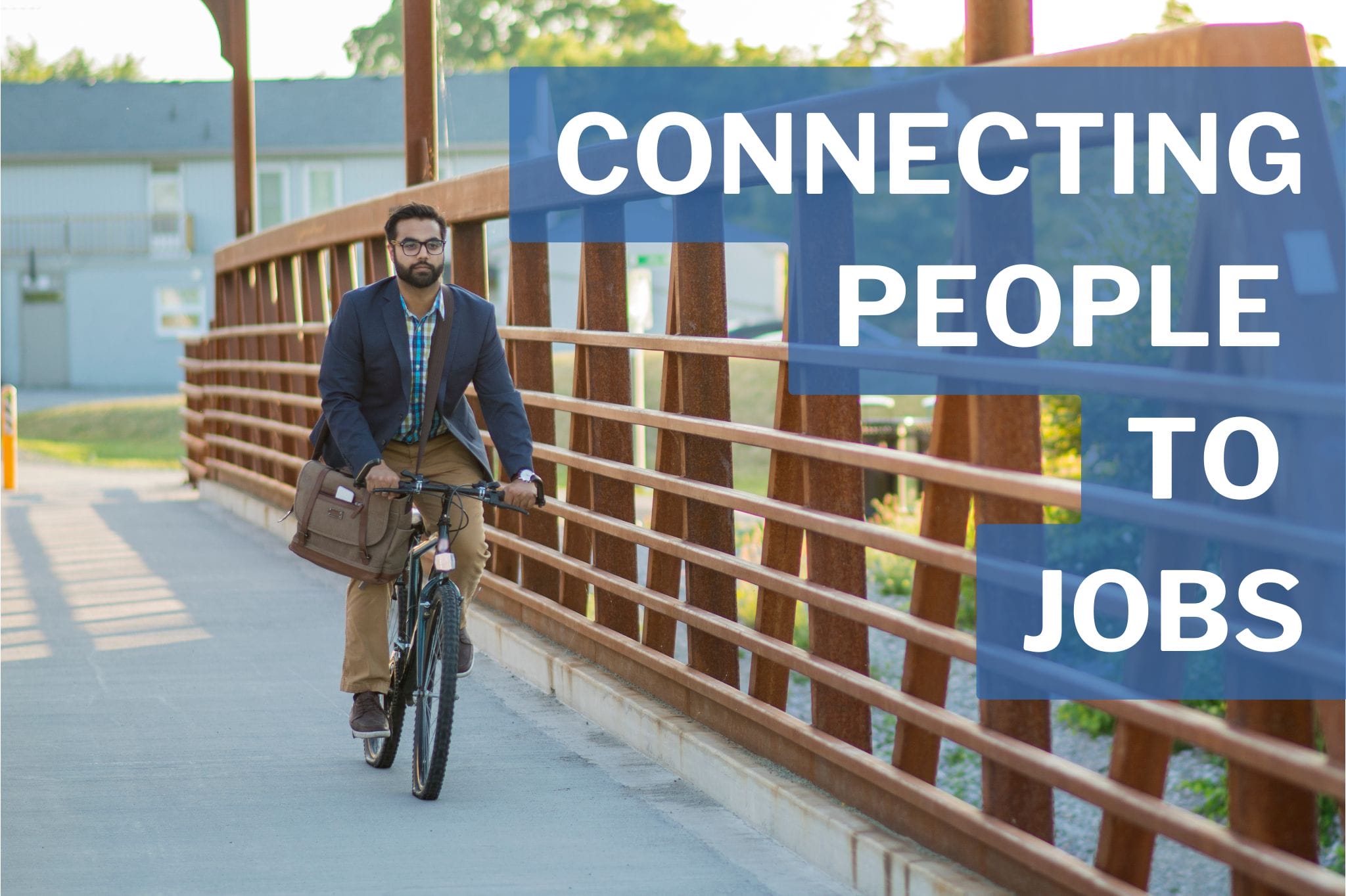

Scroll down for Call to Action
There is a to Improving Traffic Congestion & Labour Shortage Challenges
The Problem
Traffic congestion costs time and money for business, which results in reduced productivity and stifled economic potential.
It negatively impacts on quality of life for commuting workers which creates additional recruitment and retention challenges for businesses; especially when combined with our current housing crisis.
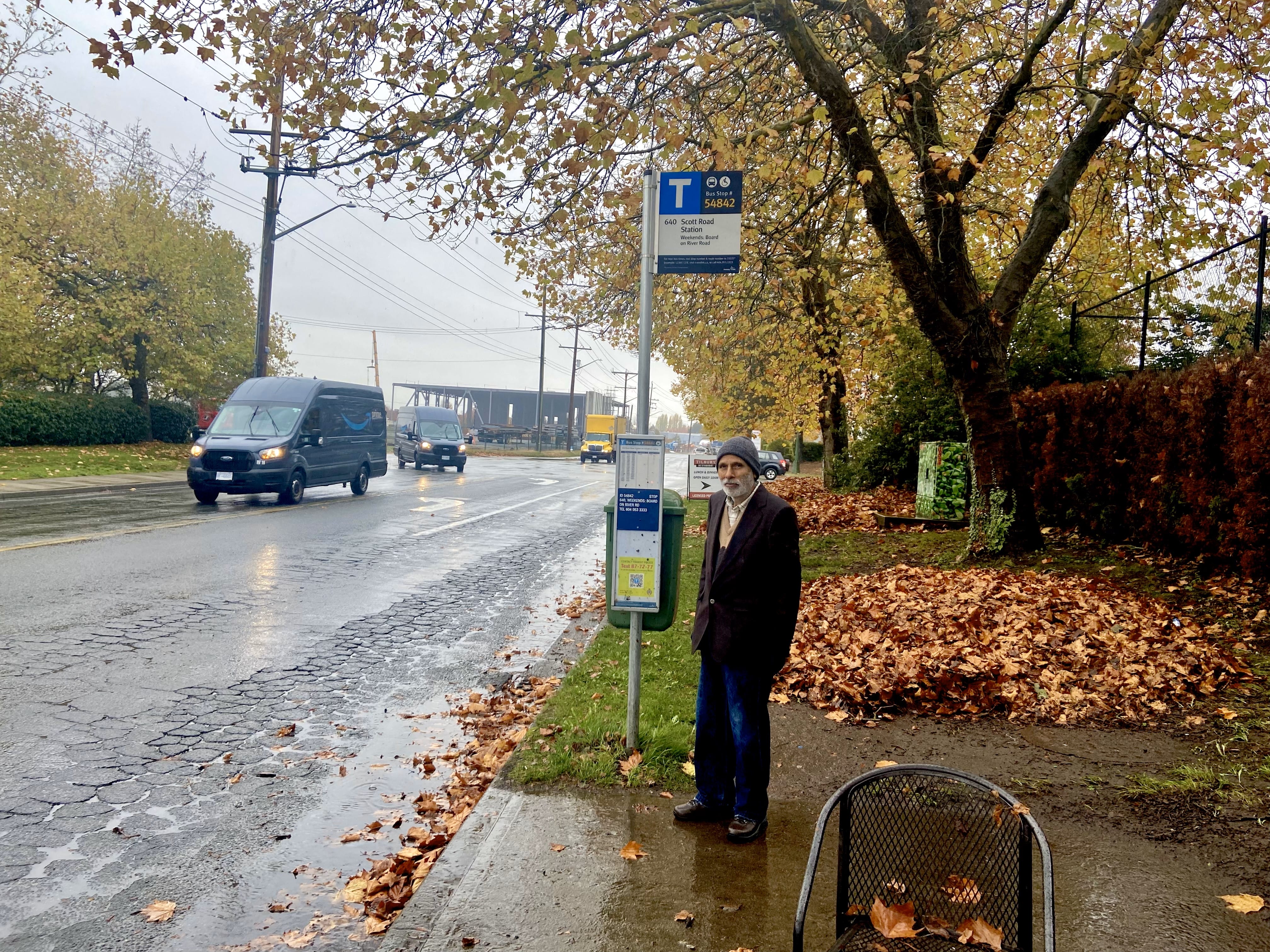

The Solution
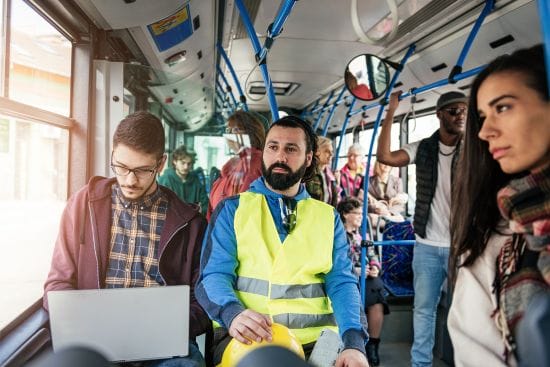

There are TWO Parts to the solution. Part 1 is Transportation Demand Management ("TDM")
- What is TDM?
- active transportation (walking, cycling, rolling, etc.) & infrastructure to support it
- public transit services & infrastructure
- carpooling/vanpooling & ride-matching services
- remote work, compressed work-week, or flexible/
- alternative hours (off-peak) work schedules
- and much more!
- By reducing the number of single occupant vehicle (SOV) trips to other non-SOV modes of travel, and/or by shifting trips to out of peak periods, decision makers are able to reduce traffic congestion; improving quality of life and saving both time & money.
Part 2 of the solution is about expanding how "jobs" are perceived in the definition of a "complete community." Jobs located in Employment Areas (like industrial areas and business parks) should have viable options for residents to access them by public transit and other forms of TDM.
- What is a "complete community?"
- diversity of housing types (single family, townhouse, affordable/social housing, apartment buildings, etc.)
- a diverse mix of land uses within walking distance of housing (and employment) and integrated with a range of transportation options
- Key daily needs are within walking distance of most residents. These include grocery stores, restaurants, daycares, playgrounds, clinics, and community facilities.
- Land uses that support employment opportunities are connected to sustainable transportation options and housing options.
- A more fulsome definition of what a truly complete community is would be one which provides the opportunity for residents whose employment is required, by zoning, to be outside of the primary residence-to-commercial-centre corridor to access their jobs via transit and/or active transportation methods.


Employment Areas
Do you know what an "Employment Area" is?
Employment Areas (also called "mixed employment areas" or "employment lands") are lands designated for "heavy" or "light" industrial purposes, as well as for the ancillary office, retail, and/or commercial uses needed to support them.
The Barriers
Do you know how complete community planning affects your business & access to public transit?
- Complete Community Planning is:
- A conceptual framework used by urban planners, elected officials, and bureaucrats across North America to determine civic infrastructure, transportation, housing, and development planning processes and investments for local, regional, and provincial/state governments.
- A foundational concept upon which public transit planning decisions are made as governments consider how to best align those plans with their overarching infrastructure investments. Local and regional governments which invest in complete community planning are ones which will have a higher density of residents and workers using public transit, and this allows for more effective and accurate mid- and long-range planning.
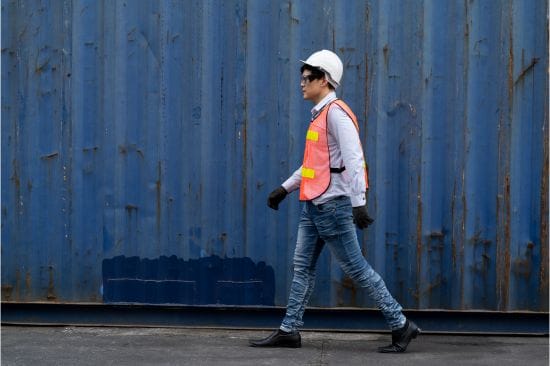

#DYK
Do you know what plans are in place to support commuting workers who work for businesses located on "Industrial Lands?"
No Plans for Commuters
The Government of BC, Metro Vancouver, and Translink DO include plans to protect "industrial lands": for investment & economic development, and to ensure infrastructure for the movement of goods.
There are NO PLANS to improve the viable commuting of workers to/from these employment areas by anything other than single occupant vehicles.


- Complete community planning has many strengths. It is, however, missing one key piece:
- In describing connecting a community's residents to jobs, complete community planning only takes into account jobs and businesses in retail, commercial, service, and civic sectors, which are located within a city or town's central distract. It does not take into consideration employment of those who work in areas deemed employment areas (aka industrial lands, business parks, etc.) which are zoned such that they are required to be located away from the residential, commercial, and public spaces of a community.
- Increased public transit service levels are reserved for areas with higher density levels of residents and retail/service (commercial) businesses. As a result, businesses located (by functional necessity and by zoning requirements) on employment lands (i.e. industrial areas, business parks, ports, airports, etc.) will never have the combination of Residents + Retail/Service density required to qualify for increased transit service, resulting in permanently low ridership, if any service is available, and little to no chance of increased service levels.
- In some communities, such as here in Delta, BC, these employment lands provide significant economic drivers and employment for residents, and yet are functionally inaccessible by transit or active transportation. These are also areas where many businesses employ workers in the Skilled Trades.
How can we recruit & retain workers into Skilled Trades jobs & other positions with businesses located in Employment Areas when they are not included in what is considered a complete community?
- Employers with positions in the Skilled Trades are facing critical labour shortages, with more vacancies expected in the decade to come. The provincial and federal governments are investing significantly into advertising and recruiting students into these fields, however with limited options for transportation to get to these jobs (see traffic congestion, limited access to sustainable transportation options, etc.) barriers to recruit & retain workers to these businesses will continue.
- For new workers in Skilled Trades, the up-front cost of tools & equipment may already be a barrier to employment. We see there is a growing trend of younger workers choosing to not get their driver's licenses as driving has become so costly that it is prohibitive for them. As such, they rely on public transit or other forms of active transportation. If a workplace is not safely and/or reliably accessible year-round in one of these methods, these new workers will look elsewhere for employment.
- Many businesses in Employment Areas have positions which could be a great fit for those with disabilities that may prevent them from driving to their place of work but which would otherwise be an excellent option for both employer and employee. Limited or no access to public transit creates an unnecessary barrier to employment, which could be addressed by increasing service levels. Equitable access to employment opportunities is a key feature to a truly complete community.
The Call to Action
- The Delta Chamber of Commerce has been working to draw attention to this issue since 2021 - with policy resolutions adopted at both a provincial and federal level) - and is asking decision makers at all levels of government to recognize the critical economic impact of employment lands.
Include the policy that has been adopted – graphics for the BC Chamber logo and Canadian Chamber logo
- Those working in skilled trades, and with businesses in industrial areas and business parks, are a necessary piece to the puzzle of what makes a truly complete community. By increasing public transit service levels to employment lands, workers will have a viable alternative to using single occupant vehicles to access employment opportunities with the thousands of employers actively seeking to hire for excellent jobs right now.
- Let's reduce that traffic congestion, improve access to jobs in our employment lands, increase economic productivity of our businesses, and do our part for the environment by including employment lands in how complete communities are perceived for transit, infrastructure, and development planning purposes.


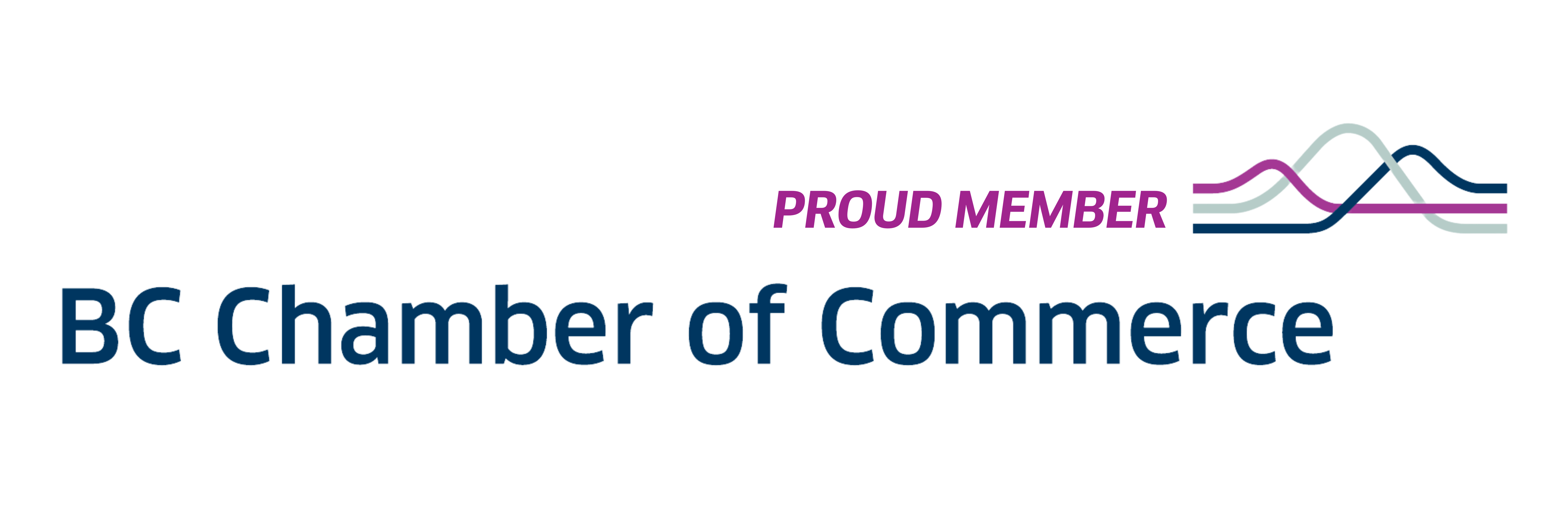

Steps You Can Take!
You may be thinking "This all sounds great but it doesn’t seem like something that I can really impact. Really, can I change government speak?" Yes, your voice is what’s necessary to bring about change!
Here are some of the steps you can take today:
- Write to your provincial elected officials:
- Rob Fleming, Minister of Transportation & Infrastructure (MOTI)
- Share your feedback on why it's important to change how "jobs" are defined in complete community planning, and how that creates barriers to getting workers in industrial areas and business parks out of single occupancy vehicles. As part of BC’s Clean Transportation Action plan, a consultation began earlier in 2023 so now is the opportunity for your voice to be heard.
- Dan Coulter, Minister of State for Infrastructure & Transit (MOTI)
- Let him know that sustainable and complete communities include ALL workers (not just those who work in retail and service jobs ) and all businesses (not just those in residential and commercial districts). One of the Minister of State's mandates is to support the MOTI to complete the transit oriented development framework to "advance sustainable communities along transportation corridors."
- Ravi Kahlon, Minister of Housing
- Share that as we build housing (in some regions/municipalities, with reduced parking requirements) we need to ensure we also build in viable and sustainable TDM options for those in the Skilled Trades and jobs located outside of commercial centres. Highlight for him the importance of equitable access to these critical jobs outside of the retail/retail (commercial) sector roles which are taken into account when complete community planning is done.
- Roly Russell, Parliamentary Secretary for Rural Development, Ministry of Housing
- If you're based in a rural community of BC, let PS Russell know that Skilled Trades and businesses outside of your rural town centres are a key economic driver for success, and that investing in TDM solutions is an important way to attract & retain new talent to businesses in the area.
- YOUR MLA
- Let them know how this issue is affecting you and ask them to advocate on your behalf, and to speak with their legislative colleagues and fellow caucus members about it.
- Rob Fleming, Minister of Transportation & Infrastructure (MOTI)
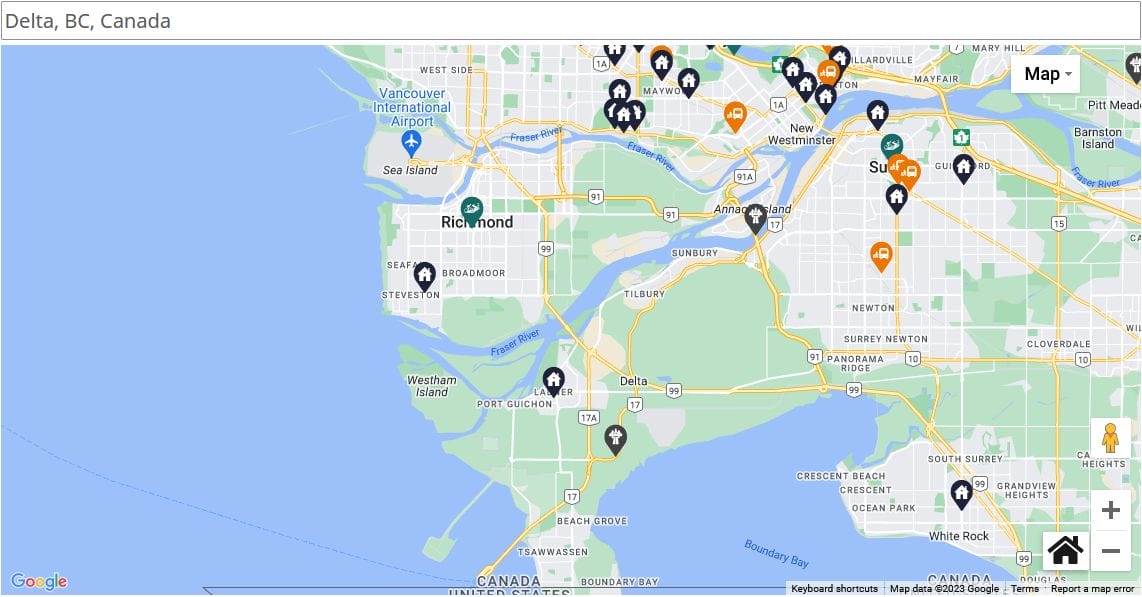

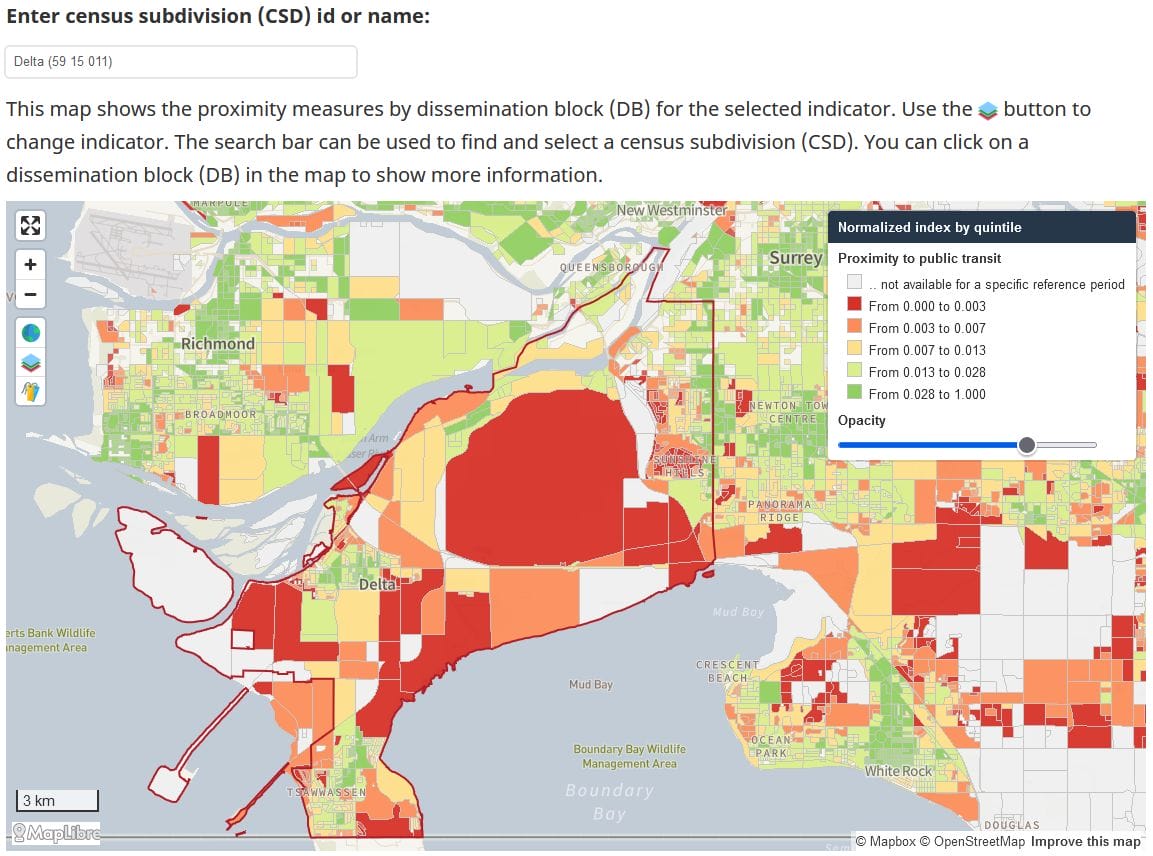

- Email your federal elected officials
- Sean Fraser, Minister of Housing, Infrastructure & Communities
- Check out this map which shows Government of Canada Infrastructure & Housing investments in your area. Let Minister Fraser know that as government is contributing to large scale transportation infrastructure and housing projects, it is critical that jobs located in employment areas be considered as part of your complete community.
- YOUR MP
- Check out the Statistics Canada Proximity to Services interactive map to see how your community measures up on a variety of issues like access to public transit, employment, childcare, healthcare, and more. Then contact your MP and let them know how this is affecting you. Ask them to advocate on your behalf, and to speak with their parliamentary colleagues and fellow caucus members about it.
- Sean Fraser, Minister of Housing, Infrastructure & Communities
- Communicate with your local government officials your support for a diversity of housing options in your community, and how you want to see residents connected to a diversity of employment options via public transit as well!
- Support for increased housing density is critical to justify the costs associated with increased public transportation infrastructure. That said, increasing a population with a worker base whose jobs are in an area not served by transit will result in negative push-back by residents regarding reduced parking requirements, so local governments need to strongly advocate for transit to the areas where their residents work - including those working in employment lands - and not only for those residents who work in commercial centres.
- Share with TransLink and the Mayors' Council on Regional Transit and Transportation your feedback on the service enhancements that would improve and optimize service to employment areas in your region. According to their 10-Year Priorities list, Translink states that "using jobs as a proxy for destinations, transit access increases over 50%" by 2035. Check their priorities map (shown here) and see if your business is located in an area currently served effectively by transit, or with plans for service level increases which would meet this target. If not, communicate with them that they are not including YOUR jobs in their calculations.
- Collect data from your organization and employees about their use of TDM options and identify the barriers they are experiencing.
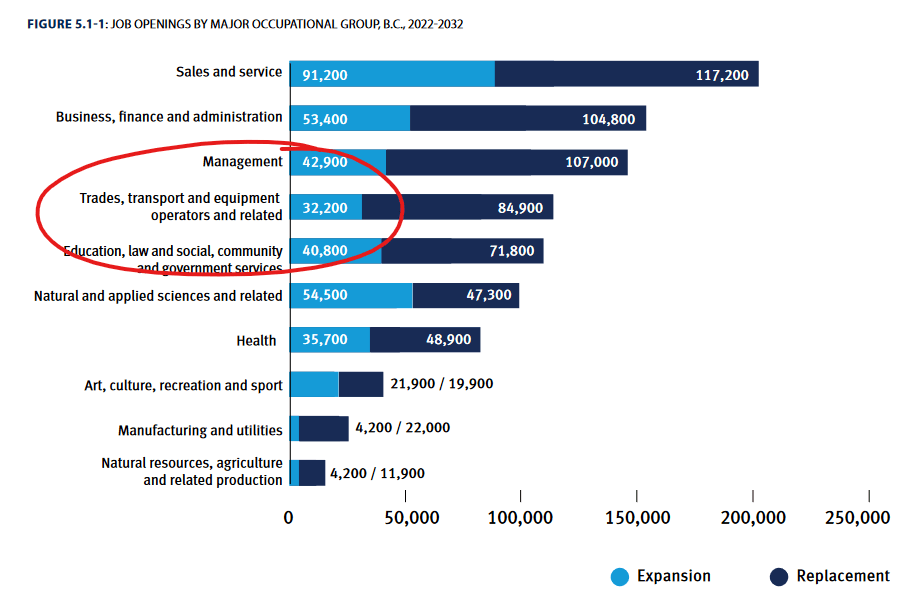

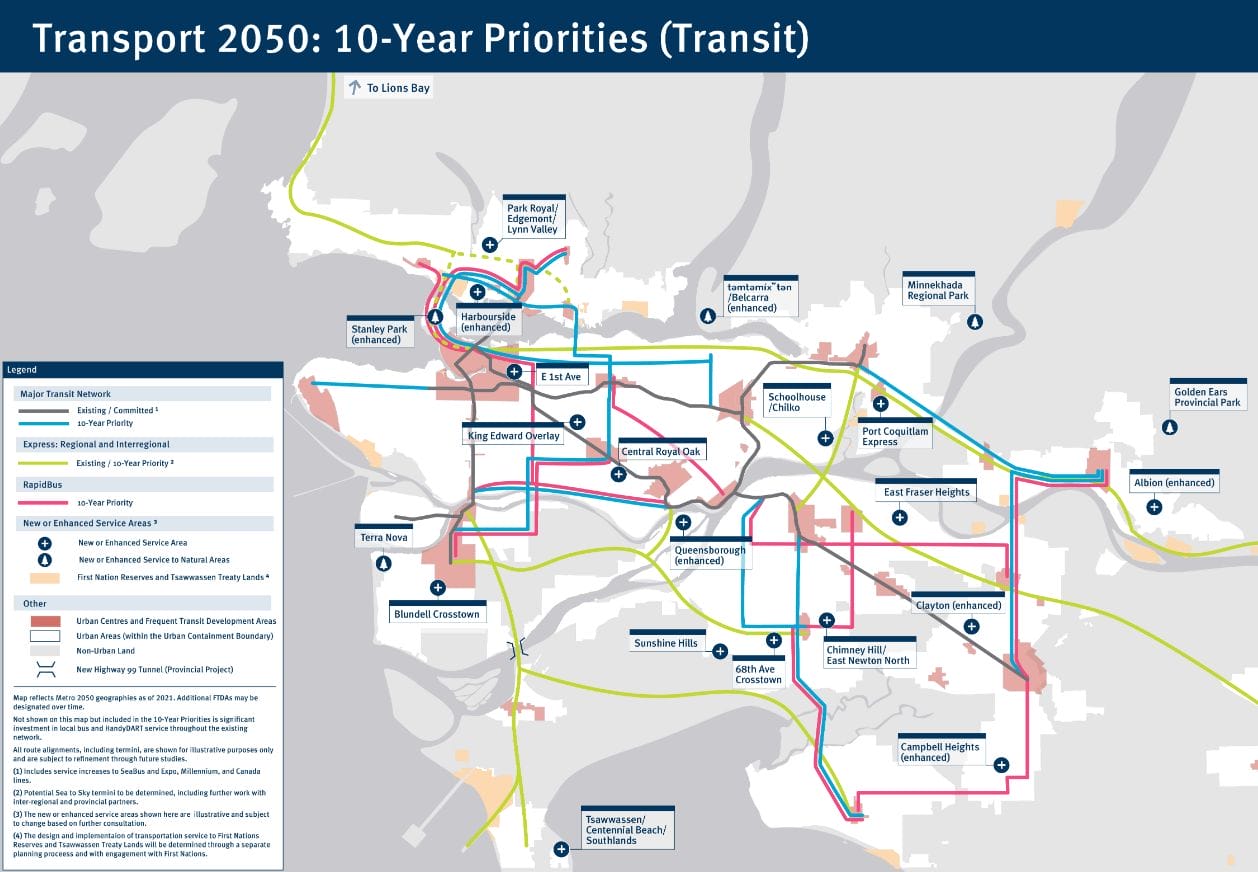

- Support active transportation by installing MUPs and/or lighting on your property, and lockers, showers, or other facilities to enhance worker confidence in using active transportation for commuting.
- Connect with local business and community organizations to elevate the messaging, such as your local chamber of commerce, HUB cycling, or others.
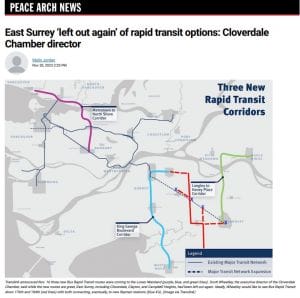

Are other communities facing these challenges?
Yes.
Re the lack of transit service to East Surrey: “They are ignoring a major transportation route south along Highway 15 and workers still only have a single bus from Langley or White Rock to get to their jobs in Campbell Heights,” Wheatley added. “The bus announcement continues the isolation of Clayton, Cloverdale, and Campbell Heights.”
Interested in learning more or getting involved? Email Lydia Elder (Manager of Policy Development, Government & Stakeholder Relations) or Jill McKnight (Executive Director) or give us a call (604-946-4232) today!
The Delta Chamber of Commerce is a member-based organization of businesses and professional people in the federal electoral district of Delta (City of Delta and Tsawwassen First Nation) which has served to promote its members’ collective commercial interests since 1910. As The Voice of Business in Delta, the Chamber works as a trusted convener and connector to build a thriving local economy through fostering economic development and influencing public policy at all levels of government - all to ensure healthy and prosperous businesses and communities.
